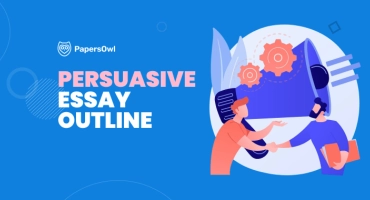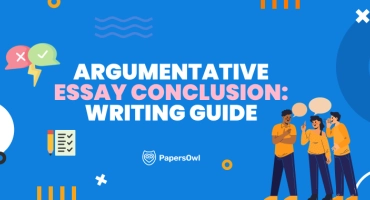Research Paper Conclusion: How to Wrap Up Research
Table of contents
When writing a research paper conclusion, It may be fascinating and difficult to summarize your key points. What should you do when the deadline is close, and you still have a blank piece of paper? To score well and make an impression on your professor, you must put in much mental effort and write with complete focus and attention.
Alternatively, you can pay for research papers and get expert guidance on any topic if you have a short deadline.
To give you a starting point, we will reckon on the following points:
- What is the conclusion of the research paper?
- What are the types of research paper conclusions?
- How to synthesize information to reinforce your central argument?
- How to write a research paper conclusion?
What Is a Research Paper Conclusion?
The conclusion is a summary of the research key findings and offers a general perspective on the study’s objectives. It often reiterates the research question, summarizing the main results and their significance. This section typically addresses whether the initial hypothesis was supported and discusses any unexpected outcomes.
Additionally, researchers may highlight the study’s limitations and propose avenues for future research.
The conclusion in the research serves to leave a lasting impression on the reader, emphasizing the broader implications of the study and its potential impact. It provides closure by reinforcing and contextualizing the study’s contributions within the existing knowledge. For those seeking assistance in crafting a strong conclusion, a write my research papers service can help ensure that the final section of the work leaves a meaningful and lasting impact.
5 Types of Research Paper Conclusions
The quality of a research paper can be significantly impacted by its conclusion. A strong conclusion for research paper will draw together the key findings, key arguments, and supporting evidence. Your research’s major components and concluding paragraphs offer the reader a feeling of finality.
Research paper layout can include a variety of conclusions, each with a unique goal of influencing the reader.
Summary Conclusion
The most typical kind of research paper conclusion is the direct summary, which briefly restates the main ideas. Before you write a conclusion for a research paper, remember to do more than just a summary. Include a few words that provide context or more information.
Editorial Conclusion
This type of conclusion focuses on the author’s opinion about the research findings. It needs to have an impelling lead paragraph, with the most emphatic writing at the beginning and the end.
Externalizing Conclusion
An externalizing conclusion paragraph for research paper presents a solution to the issue or an ongoing argument you’re covering. It also provides the prospective outcomes in case the problem remains unsolved.
Synthesis Conclusion
The synthesis conclusion shows the interconnection between all the ideas presented in the paper body. To conclude a research paper with an open end, you must examine various sources and prove that they connect with your primary thesis.
Projective Conclusion
This type of conclusion works especially well for answering research question. It describes the future outcomes of actions presented in the paper body.
Core Elements of a Strong Conclusion
The start of a conclusion serves as the final impression of a written work, encapsulating the content essence.
- Summarization is a key element, where the main points and findings are concisely restated. To write a good research paper, you should reaffirm the reader’s understanding and reinforce the significance of the research.
- Synthesis involves combining different paper elements and weaving them into a cohesive narrative. It goes beyond summarization by highlighting the connections between various sections and demonstrating how they contribute to the thesis. It helps in providing a holistic view of the subject matter.
- Discussing implications is crucial for a comprehensive conclusion. Writing a conclusion for a research paper involves exploring the work’s broader significance – how the findings impact the field of study or real-world applications. It extends the relevance of the research beyond its immediate context.
- Recommendations offer guidance for future research or practical actions. They provide a forward-looking perspective, whether suggesting avenues for further study or proposing applications of the findings. Besides, they encourage the continuation of scholarly inquiry.
As a result, a strong conclusion marries summarization, synthesis, implications, and recommendations. It leaves a lasting impression by reinforcing the paper’s key elements and positioning them within a larger context, making a compelling case for the significance and future directions of the work.
The Best Strategy for Writing an Effective Conclusion
Writing an effective conclusion for a research paper is a critical aspect of the overall document, providing a sense of closure while leaving a lasting impression on the reader. Several key strategies contribute to crafting a conclusion that encapsulates the essence of the research and reinforces its significance.
So, how to write a conclusion to a research paper you’ll be proud of? Let’s explore the best working strategies!
Repeat Your Research Question
The conclusion should circle back to the core argument or inquiry posed at the beginning of the paper. Among various steps to writing a conclusion, this reaffirmation reminds the reader of the central focus, providing a clear anchor for the closing remarks.
Explore the Main Points
While restating the thesis addresses the central idea, summarizing key points ensures that the reader comprehensively understands the main findings and supporting arguments. This concise recapitulation sets the stage for the subsequent elements of the conclusion.
Synthesize, not Summarize
A strong conclusion goes beyond mere summarization – it synthesizes the information. Instead of presenting a linear repetition of facts, combine the main points, emphasizing the interconnectedness of ideas. This synthesis demonstrates the depth of understanding and mastery of the subject matter, leaving a more profound impact on the reader.
Talk About Implications
What real-world applications or theoretical advancements does it suggest? Addressing these questions, the conclusion elevates the research from a mere academic exercise to a meaningful contribution to the field.
Set Up the Limitations
Every research endeavor has its methodological, logistical, or conceptual constraints. Acknowledging these limitations demonstrates transparency and intellectual honesty. It also allows future researchers to build upon the current work, contributing to the ongoing evolution of knowledge in the field.
Guide to the Future Directions
While acknowledging limitations, the conclusion should also offer constructive insights. What areas warrant further investigation? Are there practical applications of the research that could be explored? These recommendations provide a forward-looking perspective, emphasizing the dynamic nature of scholarly inquiry.
Provide a Strong Thesis Statement
It can be a thought-provoking insight, a call to action, or a reflection on the broader implications of the research. A memorable closing statement leaves a lasting impression, reinforcing the work’s significance in the reader’s mind.
Keep It Short
The conclusion is not the place for extensive elaboration. Remember to encapsulate the main points and findings to write a good conclusion for a research paper.
While the introduction of the paper covers the essential elements, it’s crucial to avoid unnecessary repetition or the new information introduction.
Watch Out Your Paper’s Tone
The conclusion should follow suit if the research paper has maintained a formal and academic tone. Similarly, if the paper adopted a more conversational or persuasive style, the conclusion should harmonize with that tone. Consistency in tone enhances the overall coherence and impact of the paper.
By following these steps, you can create a conclusion that effectively summarizes your research and leaves a lasting impression on your readers.

Dos and Don’ts to End a Research Paper
Here are some tips on how to write a conclusion for a research paper:
- Primarily, start characterizing your attitude to the topic and substantiating its relevance. Afterward, explain the difficulties you’ve encountered during the analysis. The outcome of this paragraph should be riveting and informative. A professor should convince himself that the student approached the analysis with enthusiasm.
- Secondly, read all your tasks recollected in the introduction and describe in detail the process of achieving them while writing the thesis. In the concluding paragraph, scribe a brief statement of the ideas resolved based on the evidence contained within the paper. Describe how you coped with the task and summarize your main conclusions.
- Thirdly, make a short description of each section. This helps draw an illation and finish statements giving voice to your ideas. Remember that every paragraph should be linked to the previous one.
It is crucial to keep in mind both the sort of paper you are writing and the main goal while you write a conclusion for research paper.
Among the most important things to leave out of a conclusion are:
- Make any new claims or introduce new material that does not directly relate to your points in the paper.
- Incorporate your opinion on the topic or speculate on future research.
- Summarize what has already been stated in the paper.
- Insert unrelated anecdotes.
- Draw overly general conclusions and lab reports that do not fully reflect the evidence presented in the paper. It shows negative aspects to a conclusion.
The conclusion must highlight your most important discoveries in a favorable light and demonstrate how your work advances the field. Thus, it should promote introspection on one’s life and how this subject could apply to society or our lives.
Before you start a conclusion paragraph for a research paper, remember to inspire readers to think about the consequences of your study for a considerable amount of time.
Research Paper Conclusion Example
A research article’s conclusion should use all available data to bolster its findings. It’s crucial to avoid adding any fresh concepts or supporting data in this part. Additionally, the conclusion must highlight the ideas discussed in the paper and throughout the oral presentations.
Consider the best way to summarize the evidence and how it relates to the research paper topic while writing the conclusion. When you write a conclusion in a research paper, provide a thorough justification and a comprehensive grasp of your study.
Research Paper Conclusion Example #1
This research sheds light on the intricate relationship between social media use and mental health outcomes among adolescents. Through a comprehensive analysis of survey data and psychological assessments, it becomes evident that excessive social media engagement correlates with heightened levels of anxiety and depression.
While the findings underscore the need for increased awareness and responsible social media usage, they also point towards potential intervention strategies. Incorporating digital literacy programs in schools and fostering open dialogues between parents, educators, and young individuals can play pivotal roles in mitigating the adverse effects identified in this study.
By addressing the challenges associated with social media, society can harness its benefits while safeguarding the mental well-being of its youngest members.
Explanation:
In this example, the conclusion summarizes the main findings – specifically, the correlation between social media use and adolescent mental health issues. It succinctly restates the importance of the research and its implications. The synthesis of the information is evident in the proposed intervention strategies, showcasing a forward-looking perspective.
Acknowledging the need for responsible social media usage and recommending concrete actions add depth to the conclusion. The final sentence wraps up the conclusion by emphasizing the balance between harnessing the benefits of social media and safeguarding the mental well-being of adolescents. Thus, it leaves the reader with a clear takeaway from the research.
Research Paper Conclusion Example #2
In conclusion, this research has shown that social media can impact mental health in teens. It was found that some teens feel bad when they use social media a lot. This is important because mental health is important. In the future, more research should be done on this topic.
Explanation:
This conclusion example is considered weak for several reasons. Firstly, it lacks a clear restatement of the thesis or main research question, failing to provide a strong focus for the conclusion. The summary of findings is overly general and lacks specificity, merely stating that social media can impact mental health without delving into the nuances revealed in the study.
Additionally, the statement on the importance of mental health is vague and does not draw on the specific results of the research. The recommendation for future research is generic and does not offer concrete suggestions or insights into potential areas of exploration. Overall, this conclusion lacks depth, fails to synthesize key information, and does not leave a lasting impression on the reader.
Summing Up
Close off the paper by revisiting the issue addressed in your introduction. Connecting the beginning and end of your essay is essential if you want it to feel complete. Refrain from leaving any questions unanswered. Doing so will leave the reader satisfied, and they will remember it while pursuing their research path.
Wondering what should the conclusion of a research paper contain? If you follow these tips when writing your conclusion paper, you’ll finish the assignment as effectively as possible. Since we’ve previously assisted, there’s no need to make up new guidelines or ask for it.
Plus, if you need assistance describing your academic study, our college paper writer team at PapersOwl offers experienced research support. Let us assist you; we’ll handle the task! With our help, you can achieve the best results while saving time and effort.







